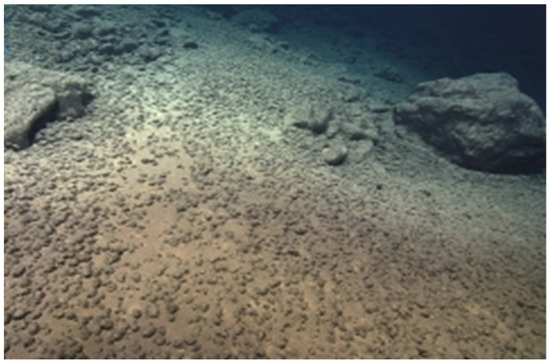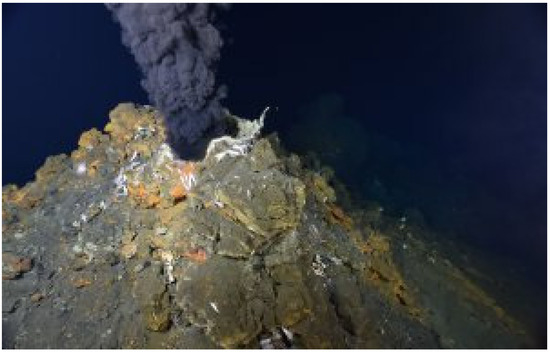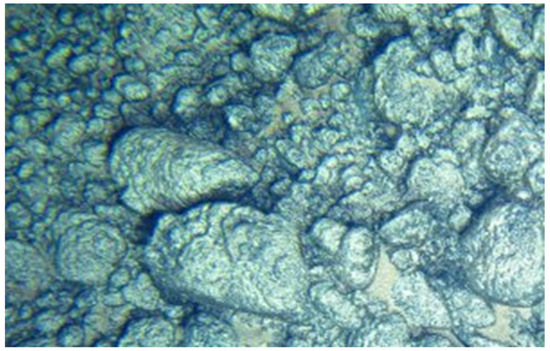Abstract
The increase in world population and the expected global development of the world economy after the COVID-19 pandemic will continue to impose unprecedented pressure on securing the supply of minerals. The World Bank report “Minerals for Climate Action: The Mineral Intensity of the Clean Energy Transition” finds that the production of minerals such as graphite, lithium and cobalt could increase by nearly 500% by 2050, to meet the growing demand for clean energy technologies. Many of these critical minerals are found in the deep seabed, the only place on earth where mineral resources have not been exploited yet. There is a strong need to ensure that these critical minerals will be extracted in a sustainable way, verifying the protection of the marine environment and biodiversity. The regulatory, financial and engineering challenges for deep sea mining are considerable, but in fact are not considered prohibitive, taking into account the remarkable achievements in recent years. On the other hand, it is evident that the existing modern ecosystem-based management approaches cannot be applied to deep sea areas without detailed knowledge of the individual species and ecosystems; most of the species living on the deep-sea floor remain unknown up until now. There is a need for the development of a new environmental management approach for each specific area. The successful procedures of Natura 2000 can be followed, and the necessary information on the existing environmental conditions has to be collected separately at every site for a minimum period of 10–15 years. Natura 2000, the world’s largest ecological network united under a single, uniform regulatory framework, is regarded as one of the conservations success stories in the global effort to protect biodiversity.
1. Introduction
Deep-sea exploration activities are carried out in national and international waters focusing on three main resource types: polymetallic manganese nodules (Photo 1), polymetallic sulfides (Photo 2), cobalt-rich manganese crusts (Photo 3). To date, there are no commercial mining activities, and prospects have been delayed many times because of the serious existing uncertainties regarding regulatory, technological and environmental issues [1].
It is widely acknowledged that we know very little about the topography, geology, ecology or zoology of the oceans [2]. The deep sea consists of a complex system, and only a very few parts of the interacting processes are understood. To date deep-sea ecosystems, remain largely unknown, and therefore it is almost impossible at this stage to design sustainable exploration as well as extraction procedures of the existing minerals. Less than 0.0001% of the deep ocean’s area (over 200 m in depth) has been investigated so far, making it the least explored area of Earth [3]. Deep-sea ecosystems encompass a wide range of habitats and environmental conditions, unlike any others on Earth.
A better understanding of patterns and processes of the deep ocean is a prerequisite and a societal need for a sustainable use of the deep-sea resources. Sustainability is based on the knowledge of natural processes and environments and preservation of ecosystems, as far as possible.
Figure 1, shows the polymetallic nodules in the sea bed where the exploration activities in the deep sea are being carried out in several areas (e.g., six exploration contracts for polymetallic nodules in Clarion-Clipperton fracture zone in the Pacific Ocean have already been finished) without a stable regulatory framework to protect the sensible deep-sea ecosystems [4]. Furthermore, there is no obligation for rehabilitation activities in these areas, which cover more than 450,000 km2 [4].

Figure 1.
Polymetallic nodules (Source: ISA).
2. Materials and Methods
Key Factors for a Successful Assessment Procedure
The environmental impact assessment normally identifies, describes and assesses in an appropriate manner, in the light or each individual case, the direct and indirect significant effects of a project on the following factors [5]:
- (a)
- Population and human health;
- (b)
- Biodiversity, with particular attention to species and habitats protected under (Habitats Directive) and Birds Directive (Directive 2009/147/EC);
- (c)
- Land, soil, water, air and climate;
- (d)
- Material assets, cultural heritage and the landscape;
- (e)
- The interaction between the factors referred to in points (a) to (d).
For all the exploration and exploitation activities that are planned to operate in Natura 2000 regions, a detailed Environmental Impact Assessment analysis has to be prepared (Article 6.3 of the Habitats Directive). This analysis includes the following actions [6]:
- (A)
- Develop a Biodiversity Action investigation and design the mitigation and restoration measures for this Natura 2000 site.
- (B)
- Implement baseline research, including surveys and mapping, and make possible the identification of impacts and necessary measures to protect the species and habitats present on the area.
- (C)
- Design special protection measures for the species which live in a Natura 2000 region. For instance, at the beginning of each breeding season, the sites are surveyed in order to locate possible breeding areas of protected species and to define operational changes that might need to be eventually applied to safeguard these species. It may be necessary to stop any quarrying activity for the critical period (March to June) in order to prevent disturbances during the breeding season. Such measures are applied in calcium carbonate quarries located in a Special Protection Area (SPA) for birds in Greece (Mikro Derio).
- (D)
- Plan the rehabilitation measures from the early beginning during the exploration phase.
- (E)
- Prepare a monitoring program to validate the results achieved and to evaluate the effectiveness of implemented actions. The restoration process may include a thorough monitoring program allowing the restoration actions to be adjusted and improved accordingly.
3. Results of Environmental Impacts Assessment
Since 2001, thirty-one contracts have already been signed by the “International Seabed Authority” (ISA) with 22 different contractors. More than four million km2 of seabed are currently under contract agreements for mineral exploration. Each of these contracts has a duration of 15 years with the option to be extended for another 5 years. None of the existing agreements addresses in a proper way the possible environmental impacts of the exploration of the seabed. More precisely, the ISA contractual system currently in place for exploration has serious weaknesses:
- (A)
- There is no description or even a rough estimation of the amount of the material to be excavated during the 15-year (or possible 20-year) period.
- (B)
- There is no indication of the number of excavation trials to be performed and the exact azimuth coordinates of each site.
- (C)
- There is no commitment on how large the total excavated area will be.
- (D)
- Each exploration application needs to prove only the financial and technical capabilities of the applicant. There is no prerequisite for environmental studies of the specific area.
During the last ten years, the European Commission has funded several projects focused on enhancing knowledge of the deep-sea exploration and exploitation (Blue Mining, Blue Harvesting MIDAS, Blue Nodules, etc.). One of the main issues [7] highlighted so far within the MIDAS project is that, despite the many gaps in the scientific knowledge of deep-sea areas of potential interest to the mining industry, the International Seabed Authority “does not publicize the scientific information collected by contractors which have obtained licenses for exploratory mining activity. It is thus difficult to assess reliably the impact of mineral exploration and, more importantly, whether sufficient baseline information is being collected to be able to conduct an effective environmental impact assessment prior to access a full-scale commercial mining. Environmental NGOs as well as other stakeholders have called on the ISA to become more transparent, to allow for greater participation of stakeholders and to ensure that effective conservation-oriented regulations are adopted before commercial mining starts.” ([8], p. 8).
According to the Standard Clauses for an Exploration Contract: “the Contractor shall, in accordance with the Regulations, gather environmental baseline data as exploration activities progress and develop and shall establish environmental baselines against which to assess the likely effects of the Contractor’s activities on the marine environment”. Even though the International Seabed Authority published a total of 100 mandatory requirements between 2011 and 2015 as guidance for the environmental baseline studies during the exploration phase [9], there is very little information available to date for the thirty-one exploration contracts. The experience of all these years shows that these environmental baseline data are inadequate and limited to serve as the basis for the Environmental Impact Assessment (EIA) that the contractor has to perform before applying for a mining permit.
Many companies such as BMW, Volvo, Google and Samsung vowed to exclude use of ocean-mined metals until risks to environment are “comprehensively understood: Before any potential deep seabed mining occurs, it needs to be clearly demonstrated that such activities can be managed in a way that ensures the effective protection of the marine environment”, the companies said in a letter distributed by WWF [10]. Furthermore, it has recently been shown that disturbances in the deep sea caused by mere scientific research persist after the initial impact for a currently unknown, but likely extremely long, time scale [11]. Permanent and irreparable ecosystem changes and biodiversity loss have been observed, as well as other ecosystem successions. Additionally, the European Parliament adopted a resolution [12] in 2018 urging its member states to stop sponsoring deep-sea mining and to invest in more sustainable consumption of materials.
The Legal and Technical Commission of the “International Seabed Authority” (ISA) argues that: “Prospecting and Exploration activities are not expected to cause serious environmental harm, at least so long as they do not involve dredging”, but according to Intergovernmental Panel on Climate Change [13], the exploration of the sea-bed deposits enhances “a significant risk to release large amounts of CO2 back into atmosphere by breaking the seabed sediments”.
Figure 2, shows polymetallic sulphides of the deep sea that contains quantities various metals such as: copper, zinc, iron, silver and gold. (ISA). However, it is evident that the existing modern ecosystem-based management approaches cannot be applied to deep sea areas without detailed knowledge of the individual species and ecosystems: The approach for the environmental management of the deep-sea mining industry [14] with the creation of two types of zones for local monitoring within a claim—Impact Reference Zones (IRZ) and Preservation Reference Zones (PRZ)—is not realistic for two reasons:

Figure 2.
Polymetallic sulfides (Source: ISA).
- It is not being tested in deep-sea areas already explored.
- It does not gain from experiences of similar cases in surface mining activities.
The use of adaptive management as part of the environmental regulatory structure for the deep seabed mineral exploitation regime is limited from ISA’s need to meet its due diligence obligations and strong security of tenure projections [15].
A recent report [11] provides suggestions for how the International Seabed Authority, ISA could effectively regulate the environmental effects of activities in the area using a toolkit of modern, precautionary and preventive governance and management instruments and measures. However, due to large gaps in ecological knowledge and technical experience pertaining to the deep sea, it is currently impossible to predict with any certainty the degree of risk mining activities poses to deep sea ecosystems.
Also, it is important to refer that the European Union created a well-known network of protected areas for habitats and species called Natura 2000. Since then, stretching over 18% of the EU’s land area and more than 8% of its marine territory, Natura is the largest coordinated network of protected areas in the world. According to Article 6(3) of the Habitats Directive 92/43/EEC1, any mining or quarrying projects within these sites or in their vicinity require an appropriate assessment to ensure that they will not have a significant impact on the integrity of Natura 2000 site [16]. Over these years, the Natura 2000 biodiversity policy in areas with high exploration or exploitation interest has been a success story showing how the needs of extractive industry can be met while avoiding adverse effects on nature and wildlife. In this regard it is necessary an assessment process before the authorization of any exploitation project where there are four distinct steps [17].
Figure 3, illustrates cobalt-rich ferromanganese crusts of the sea bed that indicates the rich volcanic activity in this area (ISA, [18]).

Figure 3.
Cobalt-rich ferromanganese crust (Source: ISA, [18]).
Most European countries have some form of legal framework through which the appropriate conservation assessments are undertaken to ensure that activities being permitted will not have an adverse effect on Natura 2000 sites prior to granting any exploration or exploitation permit.
4. Conclusions
It is evident that there is still inadequate knowledge for determining the potential impacts of deep-sea exploration and exploitation activities on the marine ecosystems. Some scientists believe that before beginning any mining activities a major research effort of over 10–15 years is needed [17]. A detailed and analytical framework of environmental policy decisions and measures is needed to ensure that only those activities will be allowed where scientific knowledge confirms that the impacts on the marine environment will be acceptable over the long-term. Additionally, a comprehensive set of mechanisms to translate the obligations contained in Article 145 of the United Nations Convention on the Law of the Sea (UNCLOS) into precautionary regulatory action has to be developed.
Whether deep-sea mining will be a viable activity in the future depends largely on its environmental impacts, which unfortunately have not been identified and described yet. In fact, the additive effects of deep-sea exploration and mining are still almost completely unknown and can be addressed only by increasing knowledge of basic and system biology of deep-sea ecosystems, and through better understanding of the complex biological interactions that enable their efficient functioning.
Applications for deep-sea exploration projects should provide a detailed Environmental Impact Assessment Study implemented in at least five to ten years’ period prior the application and based on habitat mapping of the proposed area and habitats and species which would qualify as ecologically significant according to Natura 2000’s well-defined criteria.
Informed Consent Statement
Not Applicable.
Conflicts of Interest
The authors declare that the research was conducted in the absence of any commercial or financial relationships that could be considered as a potential conflict of interest.
References
- Miller, K.A.; Thompson, K.F.; Johnston, P.; Santillo, D. An overview of Seabed Mining including the current state of Development, Environmental Impacts, and Knowledge Gaps. Front. Mar. Sci. 2018, 4, 1–24. [Google Scholar] [CrossRef]
- Ochoa, C. Contracts on the Seabed; Res. Paper No 2948; Maurer School of Law, US Indiana University: Bloomington, IN, USA, 2021; pp. 104–151. [Google Scholar]
- Danovaro, R.; Corinaldesi, C.; Dell’Anno, A.; Snelgrove, P. The deep-sea under global change. Curr. Biol. 2017, 27, R461–R465. [Google Scholar] [CrossRef] [PubMed] [Green Version]
- ISA, International Seabed Authority. Exploration Contracts. 2021. Available online: https://isa.org.jm/index.php/exploration-contracts/polymetallic-nodules (accessed on 15 August 2021).
- European Union Network for the Implementation and Enforcement of Environmental Law, IMPEL. Permitting and Inspection under Art. 6 (3) Habitats Directive Quarries and Open Cast Mining; Report Number 2016/15. 2018, pp. 1–235. Available online: https://www.impel.eu/wp-content/uploads/2019/01/FR-2016-15-DFR-Article-63-HD-Quarries-and-Open-Cast-Mining.pdf (accessed on 1 November 2021).
- Olmeda, C.; Barov, B. Non Energy Mineral Extraction in relation to Natura 2000, Case Studies; N2K Group EEIG and Institute for European Environmental Policy: Contract N° 07.0202/2017/766291/SER/D.3 E.C. 2019, pp. 1–97. Available online: https://ec.europa.eu/environment/nature/natura2000/management/docs/NEEI%20case%20studies%20-%20Final%20booklet.pdf (accessed on 1 November 2021).
- Rademaekers, K.; Widerberg, O.; Svatikova, K.; Van der Veen, R.; Triple, E. Consulting, Panella E, Milieu Ltd. Technology Options for Deep-Seabed Exploitation, Tackling Economic, Environmental and Societal Challenges; European Parliamentary Research Service PE527.401; Directorate- General for Parliamentary Research Services (DG EPRS) of the General Secretariat of the European Parliament. 2015, pp. 1–92. Available online: http://minisites.ieep.eu/assets/2131/Socio_-Economic_Benefits_of_EU_MPAs.pdf (accessed on 1 November 2021).
- Brager, S.; Rodriguez, R.G.; Mulsow, S. The current status of environmental requirements for deep seabed mining issued by the International Seabed Authority. Mar. Policy 2020, 114, 103258. [Google Scholar] [CrossRef]
- WWF. Business Statement Supporting a Moratorium on Deep Seabed Mining; WWF: Gland, Switzerland, 2021. [Google Scholar]
- Christiansen, S.; Jaeckel, A.; Houghton, K. Ecological Safeguards for Deep-Seabed Mining; Report German Environment Agency Project No. (FKZ) 3715 25 2000 Report No. FB00209; IASS Institute for Advanced Sustainability Studies Potsdam, 113/2019 Dessau-Roßlau Umweltbundesamt: Potsdam, Germany, 2019; pp. 1–308. [Google Scholar]
- European Parliament. Resolution of 16 January 2018 on International Ocean Governance 2017 An Agenda for the Future of Our Oceans in the Context of the 2030 SDGs (2017/2055 INI). Available online: https://oeil.secure.europarl.europa.eu/oeil/popups/ficheprocedure.do?lang=en&reference=2017/2055(INI) (accessed on 1 November 2021).
- IPPC, Intergovernmental Panel on Climate Change. The Ocean and Cryosphere in a Changing Climate: Summary for Policy Makers; IPPC: Rome, Italy, 2019; pp. 1–10. Available online: https://www.ipcc.ch/site/assets/uploads/sites/3/2019/12/SROCC_FullReport_FINAL.pdf (accessed on 1 November 2021).
- Jones, D.; Ardon, J.; Colaco, A.; Darden, J. Environmental considerations for impact and preservation reference zones for deep-sea polymetallic nodule mining. Mar. Policy 2020, 118, 10312. [Google Scholar] [CrossRef]
- Craik, N. Implementing adaptive management in deep seabed mining: Legal and institutional challenges. Mar. Policy 2020, 114, 103256. [Google Scholar] [CrossRef]
- European Commission. Guidance on: Undertaking Non-Energy Extractive Activities in Accordance with Natura 2000 Requirements; European Commission: Brussels, Belgium, 2010; pp. 1–140. Available online: https://ec.europa.eu/environment/nature/natura2000/management/docs/neei_n2000_guidance.pdf (accessed on 1 November 2021).
- Craw, A. Deep Seabed Mining: An Urgent Wake-Up Call to Protect Our Oceans; Erwood, S., Leal, I., Eds.; Greenpeace International: Amsterdam, The Netherlands, July 2013; pp. 1–20. [Google Scholar]
- Möckel, S. The European ecological network “Natura 2000” and the appropriate assessment for projects and plans under Article 6(3) of the Habitats Directive. Nat. Conserv. 2017, 23, 1–29. [Google Scholar] [CrossRef]
- ISA, International Seabed Authority. Exploration Contracts. Available online: https://www.isa.org.jm/exploration-contracts (accessed on 1 November 2021).
Publisher’s Note: MDPI stays neutral with regard to jurisdictional claims in published maps and institutional affiliations. |
© 2021 by the authors. Licensee MDPI, Basel, Switzerland. This article is an open access article distributed under the terms and conditions of the Creative Commons Attribution (CC BY) license (https://creativecommons.org/licenses/by/4.0/).